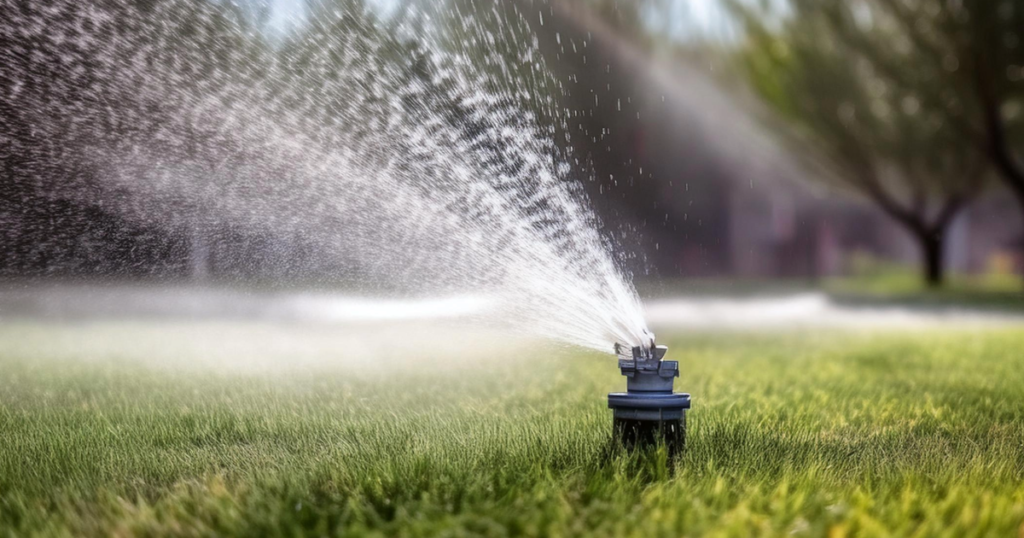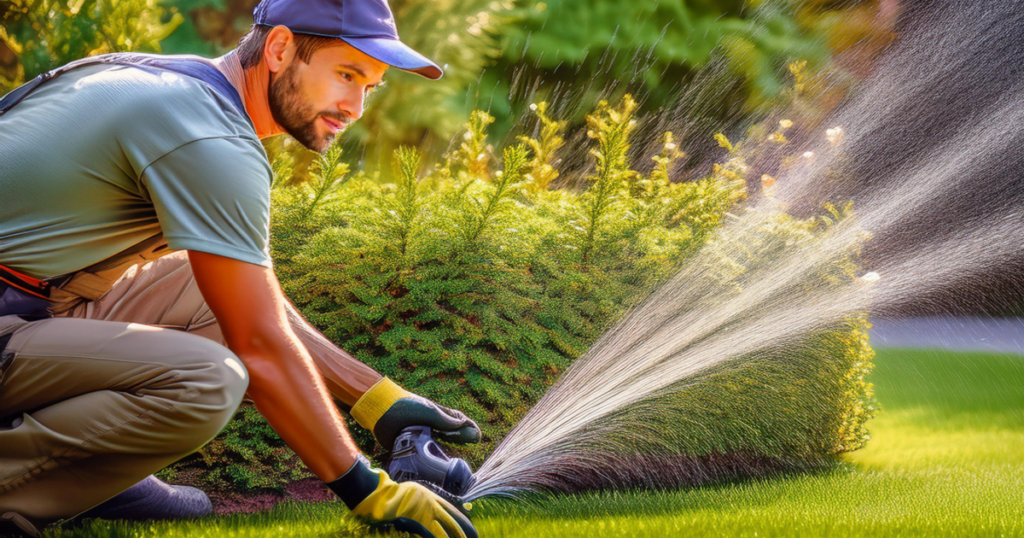How to Winterize Your Lawn Sprinkler System: A Simple Guide
As winter gets closer, it’s time to start thinking about how to protect your lawn sprinkler system from the cold. Living in the Chicagoland area, you know how brutal winters can be, with freezing temperatures lasting for months. If you don’t winterize your system properly, you could end up with frozen pipes, burst valves, and costly repairs when spring rolls around.
Whether you’re a homeowner with a sprawling yard or you manage properties with intricate landscaping, winterizing your sprinkler system is essential to avoid damage from the cold. Here in the Midwest, the harsh freeze can cause serious problems if water is left sitting in your pipes. By taking care of your system now, you can avoid the headache of expensive repairs and ensure everything is ready to go when warmer weather returns.
At American National Sprinkler & Lighting, we’ve been helping local residents protect their sprinkler systems for years. We know exactly what it takes to winterize a system for the unpredictable Midwest winters, so you can relax knowing your investment is protected.
Why You Should Winterize Your Sprinkler System
Skipping the winterization process isn’t just a minor oversight—it can lead to some pretty big problems. When water is left in your system, it can freeze during the winter. And frozen water expands, which can cause pipes to burst, valves to crack, or even your sprinkler heads to break. Not fun.
So, what’s in it for you if you take the time to winterize your system?
- Avoid Repairs: Nobody wants to deal with burst pipes or busted sprinkler heads.
- Extend System Life: Your sprinkler system will thank you by lasting longer with less wear and tear.
- Save Money: Fewer repairs mean more cash in your pocket.
In short, winterizing your sprinkler system now can help you avoid a pricey headache later.
Here’s How to Winterize Your Lawn Sprinkler System:
Let’s walk through the simple steps to get your system ready for winter:
Step 1: Turn Off the Water Supply
First things first—turn off the water supply to your sprinkler system. This is important because you don’t want any extra water flowing into the pipes after you’ve drained them. Most homes have a shut-off valve specifically for the sprinkler system, usually found in the basement or crawlspace.
Step 2: Drain the Pipes
Next, it’s time to get rid of any water still in the system. There are a few ways to do this depending on your setup:
- Manual Drain: Some systems come with manual drain valves. Simply open these valves and let the water flow out.
- Automatic Drain: If you’ve got an automatic drain system, it’ll kick in when the water pressure drops low enough.
- Blow-Out Method: For the best results, consider using an air compressor to blow the remaining water out of the pipes. This is a job best left to professionals if you’re not familiar with the process, as too much air pressure can damage your system.
Make sure all the water is out to prevent freezing.
Step 3: Insulate Exposed Components
You’ve drained the pipes, but don’t forget about any parts of your system that are still exposed, like backflow preventers, valves, or above-ground pipes. These components are particularly vulnerable to freezing. A little insulation goes a long way here! You can wrap them up with foam pipe covers or insulation tape to keep them protected during the coldest months.
Step 4: Check and Protect Your Sprinkler Heads
Take a moment to inspect your sprinkler heads before you wrap things up. Are any of them cracked or damaged? Now’s the time to fix or replace them. You can also cover the sprinkler heads for extra protection against the cold. This step will help ensure they’re in top shape when you’re ready to turn the system back on in the spring.
Step 5: Shut Down the Controller
Lastly, don’t forget about your sprinkler system controller (or timer). Make sure to turn it off or set it to a “rain mode” so it doesn’t accidentally turn the system on during the winter months. You don’t want to wake up to frozen sprinklers!
Why Hire a Professional to Winterize Your Sprinkler System?
Sure, you can DIY the winterization process, but there are some really good reasons to let the pros handle it:
- Experience: Professionals know exactly how much air pressure to use when blowing out the pipes (too much can be bad news).
- Peace of Mind: With complex systems, missing just one step can lead to costly damage. Professionals make sure everything is done right.
If you’re not sure about handling it yourself or just want the peace of mind that it’s done properly, hiring a professional like American National Sprinkler & Lighting is a great option. They’ll make sure your system is winter-ready so you can sit back and enjoy the season without worry.
Don’t wait until it’s too late! Schedule your professional winterization with American National Sprinkler & Lighting today, and keep your system safe all winter long.
Tips for Protecting Your Sprinkler System Until Spring
Here are a few extra tips to keep your system in top shape through the colder months:
- Check for leaks: Every now and then, take a peek at the system to make sure there aren’t any leaks or unexpected water spots in your yard.
- Watch out for freezing: If there’s an unexpected cold snap, keep an eye on any exposed parts of your system.
- Don’t pile snow on top: Be careful not to stack heavy snow or other objects on top of sprinkler heads or valves.
Winterize Your Sprinkler System Before It’s Too Late!
Winterizing your sprinkler system is an easy way to prevent major damage and ensure your system is ready to go when the warmer months return. Don’t leave your system to chance—take the time to follow these steps or hire a professional to get the job done right.
Get ahead of winter and protect your investment. Contact us at American National Sprinkler & Lighting today to schedule your winterization service!


